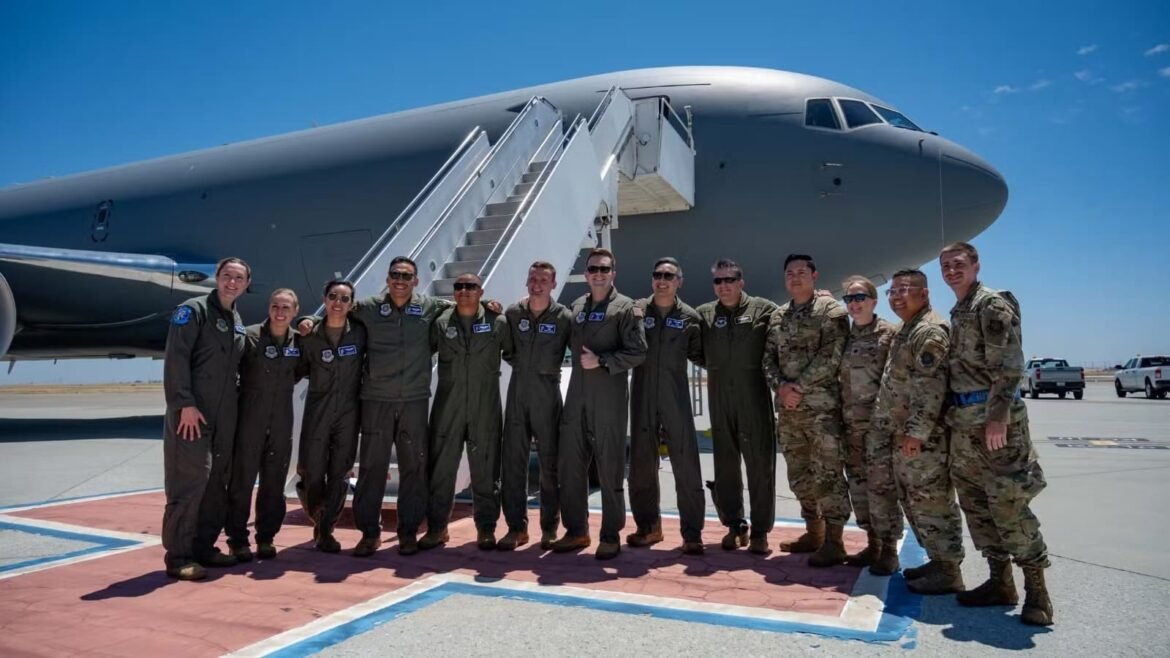WASHINGTON, D.C. — The U.S. Air Force appears poised to double down on its existing Boeing KC‑46A Pegasus “bridge tanker” program and significantly slow efforts toward a futuristic stealth tanker, according to its recently released Fiscal Year 2026 budget request Reuters+1Air & Space Forces Magazine+1.
🛫 Tankers Over Stealth
The FY 2026 proposal reveals a new “Tanker Production Extension” program, requesting $23.8 million to shape requirements and develop an RFP for follow‑on tanker procurement Air Data News+3Air & Space Forces Magazine+3Breaking Defense+3. The plan suggests the Air Force will use the KC‑46A’s existing Capability Production Document (CPD) as the affordable baseline, signaling favor toward Boeing’s Pegasus DVIDS+6Air & Space Forces Magazine+6Breaking Defense+6.
💰 Investment in Pegasus
While funding for a stealth tanker—previously dubbed NGAS or KC‑Z—is comparatively modest (around $13 million), the KC‑46 program receives a substantial boost. The budget allocates $81 million for capability improvements (up from $58 million) and $40 million for R&D (up from $35 million) DVIDS+5Air & Space Forces Magazine+5Wikipedia+5.
Key upgrades include:
- Enhanced connectivity and secure communications
- Improvements to the Remote Vision System (RVS) and boom actuator
- Self‑protection enhancements and battle-management integration Air & Space Forces Magazine+6Air & Space Forces Magazine+6Air Data News+6
Significantly, full correction of these deficiencies—including the problematic RVS—won’t complete until at least December 2025, while the boom actuator redesign is now expected to continue through FY 2027 Air & Space Forces Magazine.
🛑 Stealth Tanker Slowed
Funding for NGAS in the FY 2026 request is limited to early-stage studies, simulations, and concept refinement—far from a development push Air & Space Forces Magazine+3Air & Space Forces Magazine+3Breaking Defense+3. Analysts, including Maj. Gen. Joseph Kunkel, argue that stealth tankers may be less cost-effective than evolving current tanker architecture or deploying complementary unmanned assets like MQ‑25 Simple Flying+8The Aviationist+8Air Data News+8. The AviationWeek-affiliated AviationWeek Intelligence Network calls the shift a return to using the KC‑46 as the foundation for future tanker purchases Simple Flying+3Aviation Week Network+3Wikipedia+3.
🌀 Industry Implications
If the Air Force opts for a follow‑on KC‑46 production (not a competitor like Airbus or Embraer), that would solidify Boeing’s position. However, sources note the Tanker Production Extension could still trigger a competitive contest Aviation Week Network+3Breaking Defense+3Air & Space Forces Magazine+3.
Boeing has already expressed optimism, highlighting the advantages of incumbency and their deep integration with both the USAF and ongoing deficiency fixes Leeham News and Analysis+1Wikipedia+1.
🧭 What’s Next?
- FY 2025: Procurement strategy development, market research, and RFP drafting
- FY 2026–2027: Block upgrades for KC‑46 communications, connectivity, boom system, and RVS fixes
- Post‑FY 2027: Possible new tanker awards, continued deliveries under the current contract (capping at ~188 aircraft), or competitive follow‑on based on the KC‑46 baseline Air & Space Forces Magazine+1Leeham News and Analysis+1Leeham News and Analysis+5Breaking Defense+5Air & Space Forces Magazine+5
⚖️ Bottom Line
The FY 2026 budget leans toward pragmatism: extend and upgrade what works now rather than rush into a costly new stealth tanker. Boeing’s KC‑46 gets more life—and more tech. Meanwhile, a stealthy NGAS unit remains speculative, with limited funding and still in the research phase.
🔎 Industry Watchpoints
- Will the Tanker Production Extension become a KC‑46 sole-source extension or spark a broader competition with Airbus/Embraer?
- Can Boeing fully overcome persistent RVS and boom issues before Block II deployment?
- Is the USAF’s priority connectivity and fleet readiness strategy sustainable for contested environments without stealth?

